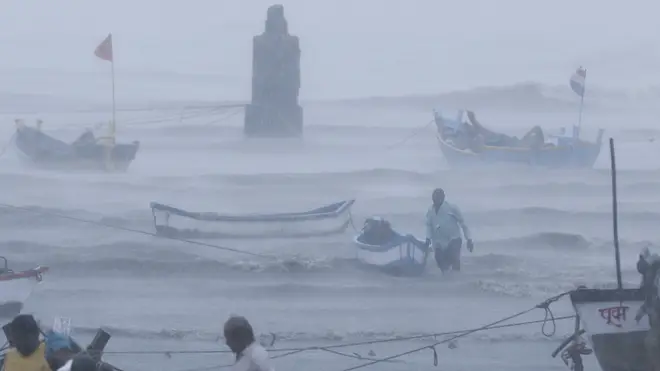
Nick Abbot 10pm - 1am
18 May 2021, 08:14

Ahead of the cyclone, about 150,000 people were evacuated from low-lying areas in Maharashtra and Gujarat.
The Indian navy is working to rescue crew members from a sunken barge and a second cargo vessel that was adrift off the coast of Mumbai following a deadly cyclone.
The navy said it had rescued 177 people of the total of 400 on the two barges in the Arabian Sea. Three warships, maritime patrol aircraft and helicopters were part of the rescue operations and were scouring seas, the navy said.
Both barges were working for Oil and Natural Gas Corporation, the largest crude oil and natural gas company in India.
Cyclone Tauktae, the most powerful storm to hit the region in more than two decades, packed sustained winds of up to 130 miles per hour when it came ashore in Gujarat on Monday. Four people were killed in the state, raising the storm’s death toll to 16.

Residents emerged from relief shelters on Tuesday to find debris strewn across roads, trees uprooted and electricity lines damaged.
In Maharashtra, six people were killed on Monday but the state’s capital, Mumbai, was largely spared from any major damage even as heavy rain pounded the city’s coastline and high winds whipped its skyscrapers.
Over the weekend, the cyclone had killed six people in the states of Kerala, Karnataka and Goa as it moved along the western coast.
The cyclone has weakened, but the India Meteorological Department forecast heavy rainfall for many parts of Gujarat and Maharashtra in the coming days.

Ahead of the cyclone, about 150,000 people were evacuated from low-lying areas in Maharashtra and Gujarat.
Both states, already among the hardest hit by the coronavirus pandemic, had scrambled disaster response teams, fearing the storm could endanger India’s fight against coronavirus, with supply lines cut, roads destroyed and lockdown measures slowing relief work.
Tropical cyclones are less common in the Arabian Sea than on India’s east coast and usually form later in the year. But experts say changing climate patterns have caused them to become more intense, rather than more frequent.